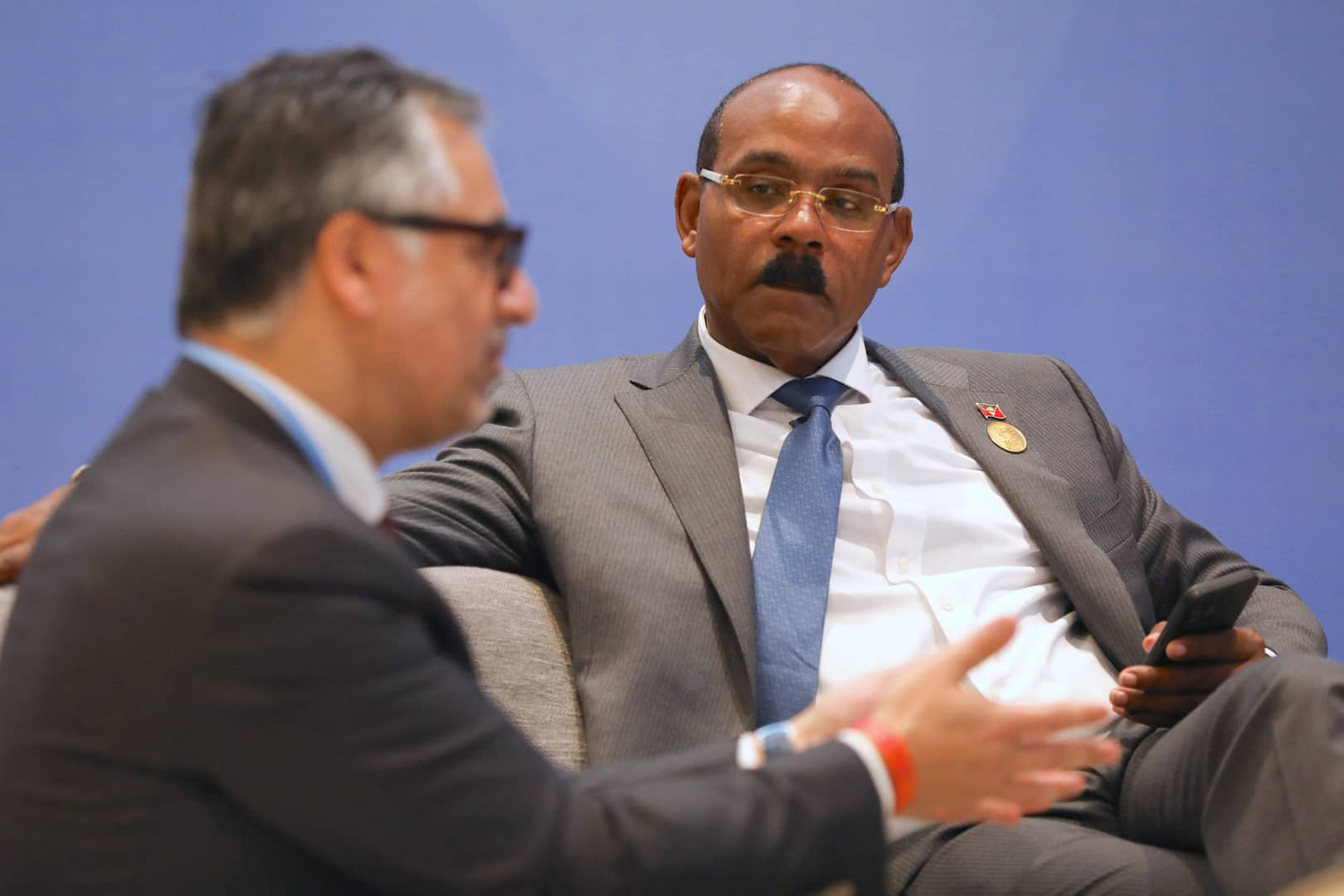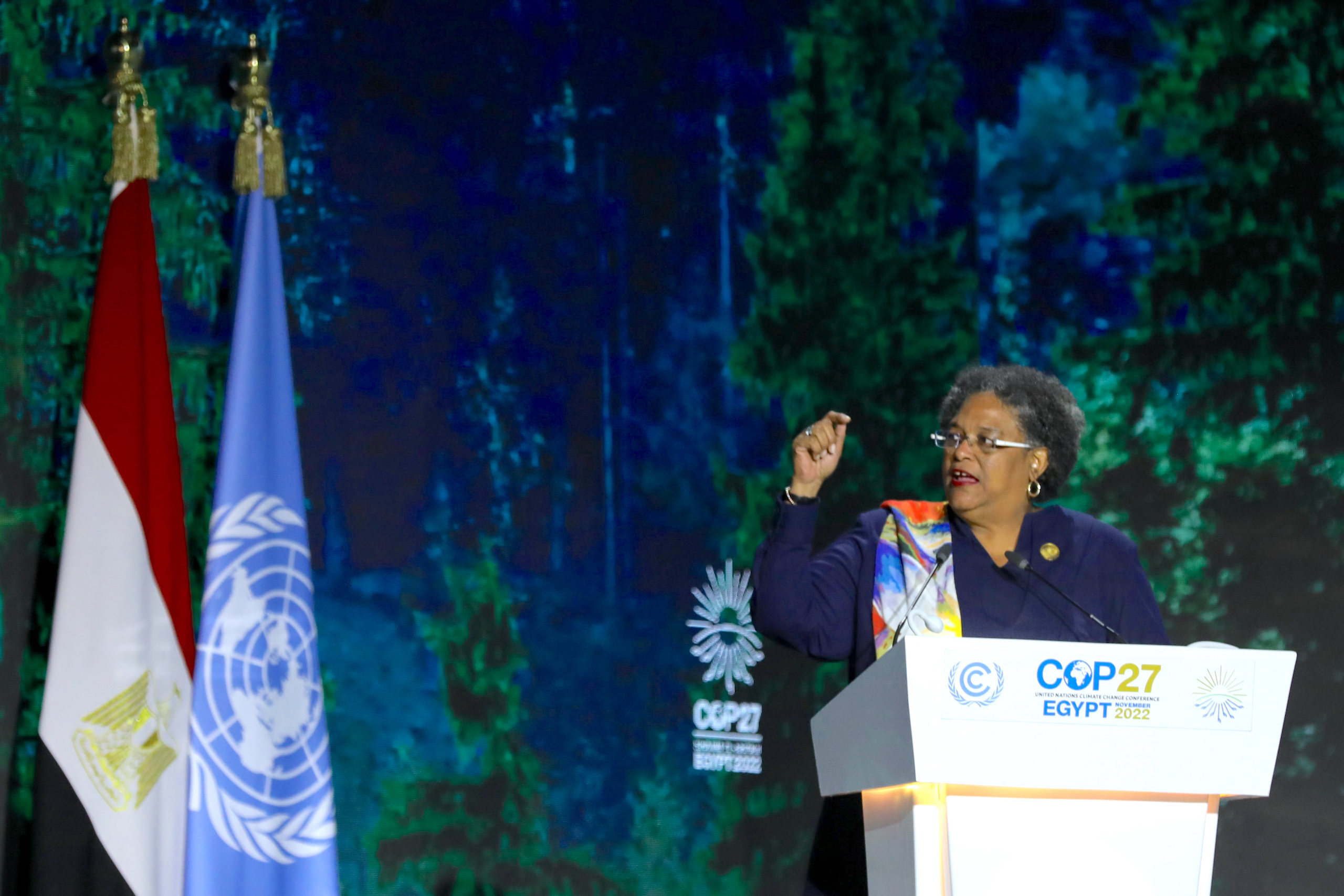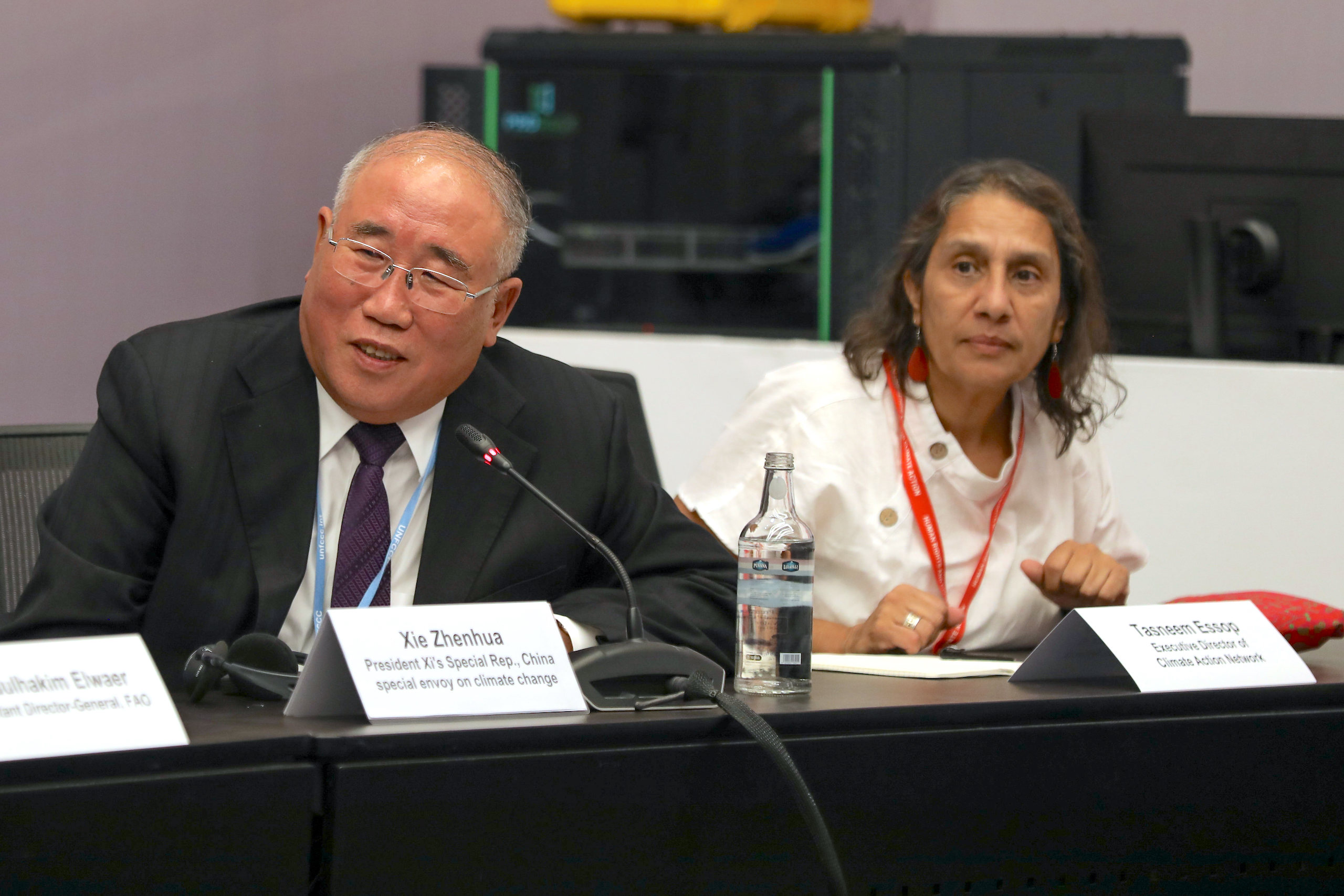
Climate change has reached a point where people can no longer adapt to many of the impacts. Delegates at the annual UN climate summit (COP27) in Sharm El-Sheikh, Egypt, spent much of the first week discussing the suffering that’s already happening across the world and took the first tentative steps toward figuring out how to pay developing countries for this loss and damage.
There were a few pledges from individual governments – US$50 million from Austria, US$12 million from New Zealand, £5 million from Scotland, and US$2.5 million from Belgium. That is a drop in the ocean, and at this stage of the negotiations, it’s unclear how this can be integrated into the loss and damage finance mechanism that’s being negotiated at the talks, and which is likely to be a key area of discussion over the coming years.
Gaston Browne, prime minister of Antigua and Barbuda and representative of the Alliance of Small Island States (AOSIS), told reporters on the sidelines of COP27 that finance for loss and damage should come from wealthy states and taxes on fossil fuel firms. Notably, the conference is being attended by over 6,000 members of coal, oil and gas companies, a 25% increase from last year.
AOSIS would like to see an agreement at this COP on a fund that is “truly operational” by 2024, Browne said. He also wanted large greenhouse gas (GHG) emitters among developing countries, such as China, India and South Africa, to pay for loss and damage.
Developing countries unite over money
As in previous climate summits, the most contentious issue was climate finance from developed to developing countries. In a year marked by disasters worsened by climate change, developing countries showed a united front during the summit’s first week on the need for money, including for loss and damage. Developed countries continued to push back on such demands.
Bhupender Yadav, India’s environment minister, told China Dialogue that the country fully supported other developing countries in their demand for climate finance, including the establishment of a separate fund to pay for loss and damage. The demand was most forcefully articulated by Pakistan, which has suffered devastating floods this year. UN Secretary General Antonio Guterres made a rare gesture by visiting the Pakistan pavilion at the summit and lending his support to the demand. Pakistan is also the current chair of the G77 and China group, a bloc of over 130 countries that conduct climate negotiations together.
A surprise from China
The main surprise from the Chinese delegation in week one was Special Envoy Xie Zhenhua’s comment at a World Bank side event that China’s methane plan is complete and in the process of approval. Xie revealed that the plan covers three sectors – energy, agriculture and waste management – and that a preliminary target is already in place. The goals are preliminary as China is still in the process of establishing a monitoring system for methane emissions. He also confirmed that, while China’s emissions control target (it’s nationally determined contribution or NDC) does not include methane, the country’s plan to reach net zero emissions by 2060 encompasses all the greenhouse gases (GHG) that are contributing to climate change.
The preliminary completion of the plan represents a deliverable under the China-US declaration on climate action at the UN climate summit in Glasgow last year, in which China agreed to develop a national action plan on “methane emissions control and reductions in the 2020s” by COP27.
“It is encouraging that the Chinese government has made progress on a methane plan,” Li Shuo, senior policy analyst with Greenpeace East Asia, told China Dialogue. “I hope that the plan can be released during this COP.”
China-US climate diplomacy has been on ice since US House Speaker Nancy Pelosi’s visit to Taiwan in August. At a press conference on Wednesday, Special Envoy Xie commented that while formal talks are off the table for now, informal conversations are ongoing and that he has already met with John Kerry, the US special presidential envoy for climate, on the sidelines of COP27. “The door was closed by them [the US], but we are trying to open it,” he said at the press conference.
“It’s clear that we are having technical level dialogue between the two sides at the climate envoys’ level in the multilateral context,” said Li. “Whether the climate suspension can be reversed is still a big question, which can only be answered on Monday when presidents Xi and Biden meet.”
The two are scheduled to meet at the G20 summit in Bali, Indonesia, kindling hopes for a re-warming of relations on climate.
China’s position on the loss and damage finance mechanism is also in the spotlight. At a press conference on Wednesday, Special Envoy Xie indicated that China supports the establishment of such a mechanism, citing climate impacts across the country this year. “China wholly supports developing countries, especially vulnerable countries, in raising the issue of loss and damage,” he said.
The UN Framework Convention on Climate Change operates under the principle of common but differentiated responsibilities for developed and developing countries in the combat against climate change. Officially a developing country, China does not have an obligation to contribute to the financing of such a mechanism, Xie pointed out, adding that, as of Wednesday, Kerry had not raised the issue in their informal discussions. However, he added that China is “willing to help developing countries in mitigation and adaptation via South-South cooperation.”
The stalled negotiations
Unsurprisingly, at the end of the first week, the detailed negotiations remained stalled on all fronts – mitigation of emissions, adaptation to climate change impacts and the loss and damage finance mechanism.
There has been little progress on the 2009 promise by developed countries to mobilise $100 billion a year in climate finance for developing countries by 2020. So far, governments at this year’s summit have not even been able to agree on how to report on this broken promise. Developing countries sought a substantive decision that would balance mitigation and adaptation finance. The Adaptation Fund remains woefully short of money. Pledges to the fund worth $174.6 million have not been kept.
The delegates did agree that there was a gap between needs and availability of loss and damage finance and the urgency to address this, especially after a disaster. Some rich countries pointed out that they do this already; developing countries responded that they wanted a separate mechanism under the control of the UN Framework Convention on Climate Change rather than ad hoc help. The Indian delegate said while humanitarian aid and response remain necessary following a disaster, loss and damage is about resilient recovery and should be in the form of grants, not loans.
Bickering over the nature of the facility, or even whether a separate facility is needed, will continue into week two and perhaps thereafter.
Africa COP
Hosted by Egypt, this year’s summit is being billed as an Africa COP and there were some announcements on helping African countries adapt to climate change impacts, including by US President Joe Biden, who delivered a well-attended speech as the first week drew to a close.
Before that, there were financial commitments of £200 million from the UK and 100 million euros from the Netherlands. The African Development Bank aims to mobilise $25 billion in climate finance by 2025, half of which has already been committed by the bank. The Global Centre on Adaptation estimates that the costs of adaptation on the continent will total $50 billion per year by 2050, even if the average global temperature rise is kept within 2C.
Then there was the African Carbon Markets Initiative (ACMI), which aims to generate $6 billion of revenue by 2030 for climate-related initiatives. “It is positive to see initiatives like this being created in an effort to integrate Africa into carbon markets, especially since Africa has had a very small portion of carbon markets so far,” said Lauren Ashmore, climate analyst with Development Reimagined.
However, carbon credits will likely be more expensive in Africa, so it will remain easier to buy them elsewhere. “There is a lack of clarity on how this structural issue can be solved,” Ashmore said.
Carbon markets have their share of critics. “What we need is drastic emissions reductions across the world. A carbon market will allow polluting industries in the global north to carry on polluting while they ‘buy’ the credit for not emitting from an African country,” said Mohamed Adow, director of Power Shift Africa, a think tank.
However, the need for money in Africa is apparent. Attending the launch of the Africa Multi-Hazard Early Warning and Action System at COP27, President of Mozambique Filipe Jacinto Nyusi, said that most of the 55 African Union member states do not have fully functional multi-hazard early warning systems. “Climate change and poorly planned development will worsen the current risk profile and will render current early warning systems and other disaster risk management systems irrelevant,” he said.
Malawi President Lazarus Chakwera, pointed out in his address at the opening session: “Nature is losing its patience with us and lashing out with unrelenting vengeance. And as nature lashes out, our citizens are also losing their patience.”
Little focus on Latin America
COP27 has brought high visibility for African countries but that has not been the case for Latin America, with only four heads of government attending the start of the summit. Visibility may improve with the arrival of Brazil’s president-elect Luiz Inácio Lula da Silva in the second week.
Of the four top leaders who attended the inaugural sessions, President Gustavo Petro of Colombia talked about the need for “mobilisation of humanity, devaluation of the hydrocarbon economy, avoiding war and moving to a decarbonised economy”. President Nicolás Maduro of Venezuela held the “destructive capitalist model” responsible for climate change.
The Community of Latin American and Caribbean States (CELAC), a bloc that brings together all the countries of the region except Brazil, presented a joint declaration detailing shared aims for the summit. This was seen by leaders and civil society as a first step for the region to eventually negotiate together at COPs, instead of participating in fragmented blocs.
Latin American leaders have emphasised several priority issues for the region, many of them shared. The list includes increased finance to adapt to the effects of the climate crisis, new financial instruments such as debt for climate swaps and protecting the forests, especially the Amazon. Costa Rica, Colombia and Ecuador signed a pledge to protect forests.
Advertise with the mоѕt vіѕіtеd nеwѕ ѕіtе іn Antigua!
We offer fully customizable and flexible digital marketing packages.
Contact us at [email protected]





















United Nations (UN) translation:
The “Now Where Green” COP27 conference.
If the UN really mean what they are saying, then pay-up the CLIMATE REPARATIONS for the blood, sweat and tears that many of our ancestors paid the price for in creating your vast wealth – to this day – during the course of the industrial revolution.
Simple really!
Maybe Caribbean nations should pay reparations to the Northern Hemisphere because they have more sun and warn weather.
Comments are closed.